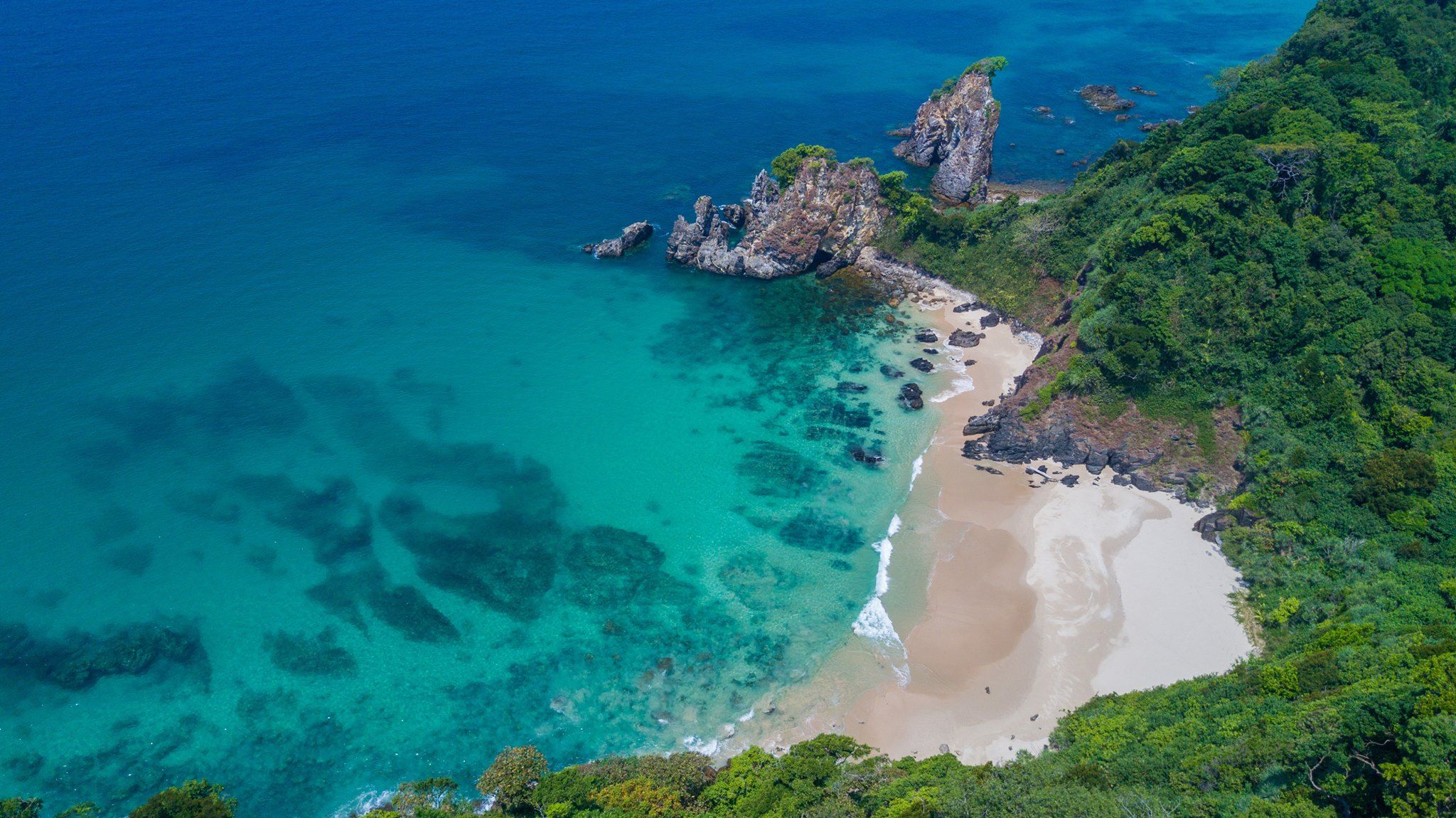Flag of Myanmar

The current flag of Myanmar was adopted on 21 October 2010 to replace the former flag in use since 1974. The new Myanmar flag was introduced along with implementing changes to the country’s name, which were laid out in the 2008 Constitution. This makes the current flag of Myanmar become one of the youngest flags in the World. Go with Myanmar Travel briefly through the contemporary history of this nation and get to know more about Myanmar flag meaning.
Table of Contents
1. Design of Myanmar Flag
The national flag consists of three equal horizontal stripes with different colors. The upper stripe is yellow, the middle stripe is green, and the lower tripe is red. Centered over the tricolor stripes is a white, five-pointed star. The flag has a width-to-length ratio of 1 to 2.
2. Myanmar flag meaning
The most significant meaning behind the flag of Myanmar is the three colors used in the design. The yellow band represents solidarity, the green band stands for peace and tranquility, and the red band symbolizes courage and decisive action. The white star represents the country itself and the importance of the union of its constituent parts.
Source: Myanmar National Portal
3. List of Burmese flags
3.1 Burma flag in 1940

Flag of British Burma as a separate colony
3.2 Flag of Burma 1948 – 1974

Flag of burma 1948 – 1974
The 1948 flag of Burma is combination of Blue & Red color with 5 with stars presents for 5 main ethnic groups :Burmese, Shans, Karens, Chins, and Kachins.The big star in the middle stands for Nation ‘s solidity. The white color presents for the honesty. This is the first flag of a modern independent Burma (Myanmar)
3.3 Former Flag of Myanmar 1974 – 2010

Flag of Myanmar 1974 – 2010
A new design for the Burma flag was adopted on 3 January 1974 upon the declaration of a socialist republic by Ne Win has a similar ratio as the previous flag and depicted 14 stars, encircling a gear and a rice bud ( which stand for the country ‘s agriculture and the gear represents its industry, and the 14 stars represent for 14 member states of the Nation.
3.4 Today Myanmar’s Flag
In 2006, Myanmar adopted a new flag, which consisted of three horizontal stripes of the colors green, yellow and red. At the top left corner of the green line was a five-pointed star. This design is similar to the 1943 flag with the only difference being the removal of the peacock insignia. Although the proposed flag consisted of the star at the upper left corner, the one that was officially adopted had a sizeable five-pointed star at the center. On October 21, 2010, at about 3:00 pm, officials were ordered to lower the old flags, which were all burned and the new flag was officially hoisted.

Flag of Myanmar today
Today Myanmar National Flag was proposed on 10 November 2006 during a constitutional convention. This new flag would have consisted of three equally sized green, yellow, and red horizontal stripes, with a white star in the middle.
The yellow represents solidarity
The green symbolizes peace, tranquility and lush greenery
The red represents courage and determination
The white star stands for the significance of the union of the country.
4. Recent History of Myanmar
1300 – 1500: The first Burma flag was recorded which was used in Hanthawaddy kingdom. It displayed a yellow peacock in profile on a green field.

Flag used in the Hanthawaddy Kingdom (c.1300–1500)
1500 – 1752: There is a gap in the flag’s recorded history. Given that the next flag also featured a
peacock, it is likely that the bird also featured on the intermediate flags as a symbol of the nation.

Flag of British Burma as a part of British India (1824–1937)
1752 – 1885: The flag of the Third Burmese Empire was used under the Konbaung dynasty. It featured a peacock on a white field which is a symbol of the nation itself. Actually, it was not the only flag to be used during that period. Burma became part of British India in 1824, and it also used the Indian flag until it became a separate colony.

Flag of the Third Burmese Empire under the Konbaung dynasty (1752–1885)
1885 – 1939: British troops entered capital Mandalay in 1885. The flag of new British colony was used which consisted of a plain red field with a Union Jack on the upper left – hand corner. It also had a star of India at the center.
1939 – 1941: Burma received a unique colonial flag which was a blue ensign with the Union Jack at the upper left corner and a peacock at the right – hand side.

Flag of British Burma as a separate colony (1939–1941; 1945 – January 3, 1948)
1941 – 1942: The flag of Burma changed again. The Union Jack was removed. The new flag consisted of a blue background with a peacock at center.

Flag used in the Hanthawaddy Kingdom (c.1300–1500)
1942 – 1943: The Japanese Empire invaded the country, so Japanese flag was used through the country. It consisted of a white background with red circle at the center.

Provisional flag used during the Japanese Occupation (1942–1943)
1943 – 1945: Japanese-sponsored puppet regime established a new tricolor flag. It consisted of horizontal stripes of yellow-green-red bearing a white disk with a peacock at center.

Flag of the State of Burma (1943–1945)

Variant design of the flag of the State of Burma (1943–1945)
1945 – 1948: The British regained Myanmar from the Japanese and the British flag with blue insignia was temporary in use.
1948 – 1974: Britain recognized the independence of Burma and the first flag of the Independent Union of Burma was introduced. It consisted of a plain red field with a dark blue canton bearing one large white star surrounded by five smaller ones—symbolizing the union of the country’s Burman, Karen, Shan, Kachin, and Chin ethnic groups
1974 – 2010: Burma became a socialist republic. A new governing regime replaced old flag with a modified version. The stars for the ethnic groups were replaced by 14 stars standing for the country’s political subdivisions, and instead of the large star there was a cogwheel representing industrial workers.
In 1988, following the establishment of a new military government, the name of the country was changed from Burma to Myanmar; the 1974 flag was retained. Myanmar ratified a new constitution in 2008 (in effect January 2011), and one of its provisions was the adoption of a new national flag. The new design is similar to the1943 version with yellow-green-red tricolour, but, instead of the peacock used on the earlier standard, a white star was set in the center of the flag.
When you travel to Myanmar, you would see Myanmar Flag everywhere, that could be the government buildings, the National respected sites or the proud places or things of people. On the National Day or Ceremony or at the National soccer game, you could see so many country flags. It stands for the power of Nation Solidity and every Burmese Citizen would be proud for.
5. Some information about Myanmar flag:
In which year, the national Flag is adopted?
Ans: On 21 October 2010
What are the colours of the flag?
Ans: yellow, green, white and red
What do the colors of Myanmar flag means?
Ans: The most significant meaning behind the flag of Myanmar is the three colors green of the flag stands for peace, serenity, and flora. The color red illustrates bravery and firmness, and the white star represents the country’s union.
Source: Wikipedia
















